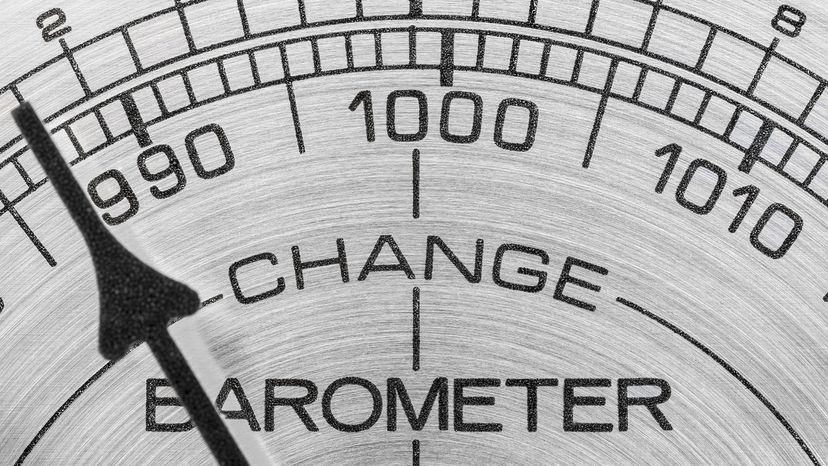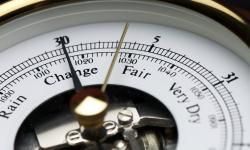People in the United States are used to digesting barometric pressure readings in terms of inches of mercury. This measurement refers to how many inches high a column of mercury will be in a traditional barometer. The standard barometric pressure at sea level is 29.92 inches (1,013 millibars) of mercury (also measured as 1 atmosphere). In general, a normal range for barometric pressure is between 28.5 (965 millibars) and 30.7 inches (1,040 millibars) of mercury.
Meteorologists have observed extreme barometric pressure readings that have gone well beyond this normal range. In December 1968 in Siberia, a barometer recorded a pressure reading of 32.01 inches (1,084 millibars) of mercury. This reading, taken during an extremely cold, dry weather spell, is thought to be the highest barometric pressure ever recorded.
On the other extreme, an October 1979 typhoon over the Pacific produced a stunningly low barometric pressure reading of 25.9 inches (877 millibars) of mercury. Indeed, nearly all the lowest pressure barometer readings in the world have been read measuring hurricanes, cyclones and typhoons. For accuracy's sake, these are the lowest pressure readings at sea level. Extremely low pressure readings have also occurred high in the mountains, where air is far less dense.



